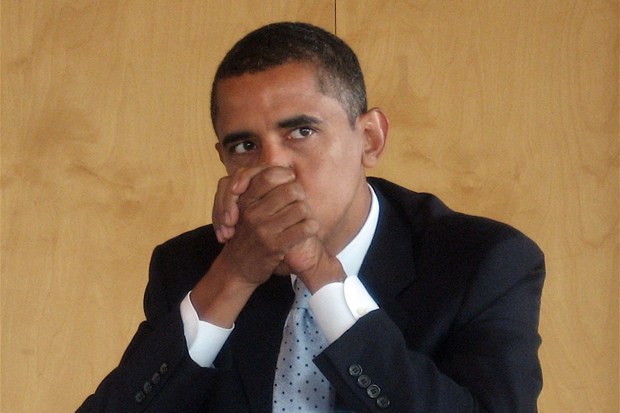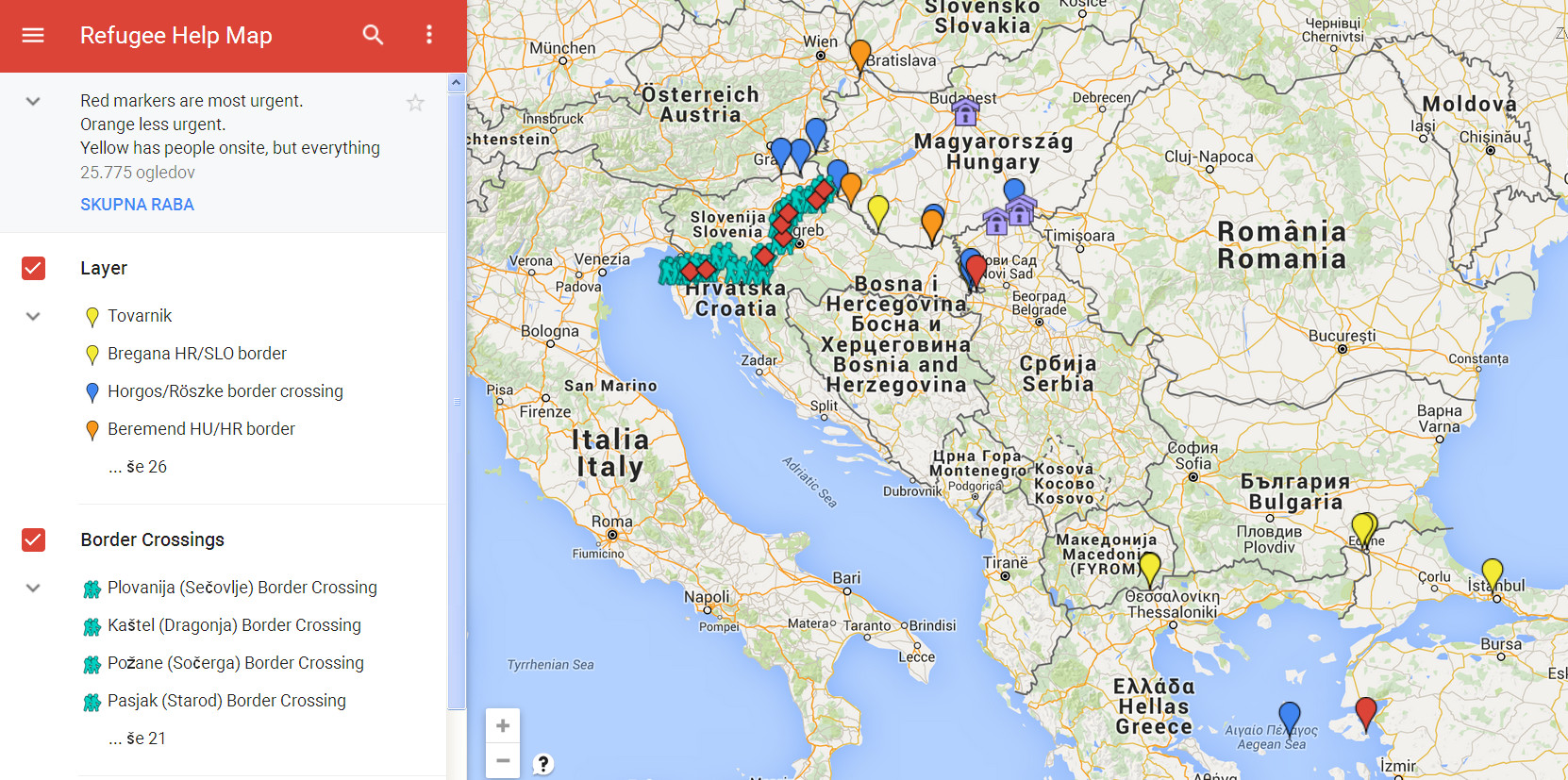Obama’s distinction goes to the heart of several current, often heated, debates about the al Qaeda network, including the question of whether the jihadist group had a hand in the notorious Benghazi consulate attack that killed U.S. Ambassador Christopher Stevens. Obama’s minimalist conception of al Qaeda is rather widely held. Under this view, al Qaeda is relatively small, and groups that have taken up its mantle but aren’t engaged in active plots against the United States cannot really be considered al Qaeda. But there is also a competing view, in which the senior leadership plays a more powerful role within the network, and al Qaeda may be broader than just the recognized affiliates.
It is worth understanding the competing minimalist and expansive conceptions of al Qaeda, because how we understand the group fundamentally relates to what policies the U.S. enacts to counter it. Though the minimalist view has been widely portrayed as more nuanced than the expansive one, that is mistaken.
The Minimalist View of Al Qaeda
Obama’s position, the minimalist conception, holds that al Qaeda should be understood as the group’s senior leadership and recognized affiliates who have had an oath of allegiance to that leadership publicly accepted. An example of this dynamic is when Somali militant group al-Shabaab became part of al Qaeda in February 2012: this was personally announced by al Qaeda emir Ayman al-Zawahiri. Some more forceful iterations of this argument hold that even the regional affiliates should not be considered al Qaeda because only the group’s senior leadership has a truly global agenda.
Those with the minimalist understanding generally believe that al Qaeda’s core has trouble controlling even the regional affiliates. Lack of unity within the network bolsters this position, including, for example, the obvious tensions between al Qaeda’s senior leadership and the Islamic State of Iraq and al-Sham (ISIS), which is warring against fellow jihadists in Syria. Because this view sees al Qaeda as more a brand than a hierarchical organization, it often only sees a group as al Qaeda if it is planning an attack against the United States.
To understand the prevalence (though perhaps not dominance) of this conception of al Qaeda, one can look to a couple of recent news stories. David Kirkpatrick’s New York Times investigative report on Benghazi, which was briefly hailed as the definitive account, concluded that there was “no evidence that al Qaeda or other international terrorist groups had any role in the assault.” Indeed, Kirkpatrick describes Ansar al-Sharia in Benghazi, which spearheaded the consulate attack, as a “purely local extremist organization.” His reporting was praised by many for its nuance.
At the New Yorker, Amy Davidson stated that Kirkpatrick’s report had “a level of complexity to it that, for those deeply invested in various theories about Benghazi, just does not compute.” In other words, to Davidson, Kirkpatrick’s findings possessed richness and shades of grey that would fly right over the heads of partisans attempting to fit his work into simple narratives about al Qaeda and Benghazi. Other commentators struck a similar note, finding that “it’s all but impossible to pinpoint exactly what ‘al-Qaeda’ is these days anyway,” due to the way the term has been thrown around loosely.
Conversely, the Senate Select Committee on Intelligence published a bipartisan report less than three weeks after Kirkpatrick’s article came out holding that “individuals affiliated with terrorist groups, including AQIM [Al Qaeda in the Islamic Maghreb], Ansar al-Sharia, AQAP [Al Qaeda in the Arabian Peninsula], and the Mohammad Jamal Network, participated in the September 11, 2012, attacks.” ABC News followed up with a report concluding that the SSCI’s findings showed that “these regional al Qaeda affiliates work together better than was believed before Benghazi.” Representing the skepticism that follows such claims, one informed regional observer commented, “‘Affiliate of al Qaeda’ has become a broad term these days.”
The Expansive View of Al Qaeda
The competing, more expansive view of al Qaeda holds that the network is broader than just its core and affiliates. The expansive version holds that al-Qaeda may in fact have taken on unacknowledged affiliates during the Arab Spring: after all, the large cache of documents captured from Osama bin Laden’s Pakistan hideout establishes that the jihadist leader wanted to rebrand the organization. Under the expansive view, the various Ansar al-Sharia groups that suddenly sprung up in the Arab Spring environment—claiming that they subscribed to al Qaeda’s ideology yet maintained organizational independence—may in fact be part of al Qaeda.
The notion that these groups might actually be al Qaeda is illustrated by Ansar al-Sharia in Tunisia (AST). A year or two ago, most observers would have considered AST “purely local,” in Kirkpatrick’s words.
To be sure, there were reasons to suspect from the time of AST’s birth that it might be more than local. Its leader, Abu Iyadh al-Tunisi, had longstanding jihadist credentials as well as specific connections to al Qaeda. Among other things, while living in Taliban-run Afghanistan in 2000, Abu Iyadh founded the Tunisian Combatant Group (TCG), which facilitated the assassination of Northern Alliance leader Ahmad Shah Massoud in Afghanistan just before al-Qaeda executed the 9/11 attacks; and in 2002 the United Nations designated TCG an al Qaeda associated organization. Other AST members, such as Sami bin Khamis Essid and Mehdi Kammoun, had been an important part of al Qaeda’s network in Italy.
Over time, growing evidence suggested connections between AST and al Qaeda’s North African affiliate, Al Qaeda in the Islamic Maghreb (AQIM). Tunisian authorities alleged in December 2012 that the Uqba ibn Nafi Brigade, a militant group operating between Algeria and Tunisia that engaged in frequent combat with Tunisian authorities at the border, linked AQIM to AST operationally.
The following year, after AST allegedly assassinated two secular politicians, the Tunisian government officially designated the group a terrorist organization and issued a ban against it. Tunisia also released new information connecting AST to AQIM. This included allegations that AST emir Abu Iyadh al-Tunisi and AQIM leader Abu Musab Abdel Wadoud had signed a handwritten “Allegiance Act,” and that Abu Iyadh had made “an oath of allegiance to an Algerian emir” (likely Abdel Wadoud). Tunisian sources further claimed that AST’s funding came from al Qaeda financiers. When the U.S. State Department designated AST on January 10, 2014, it described the group as “ideologically aligned with al Qaeda and tied to its affiliates, including AQIM.”
This progression of evidence demonstrates a great deal. AST was initially understood as local despite its leader’s international connections. Over time, evidence began to suggest some operational connection to AQIM, though the precise contours weren’t clear. Both Tunisia and the U.S. have made clear that their intelligence suggests the initial descriptions of AST as purely local were inaccurate. Indeed, if Tunisia’s information is right—including Abu Iyadh al-Tunisi taking a formal oath of allegiance to AQIM’s emir, and AST receiving funding from al Qaeda—that strongly suggests that AST was in fact an actual part of al Qaeda.
So What is Al Qaeda?
Some analysts are skeptical of claims that AST can actually be considered al Qaeda because they doubt the Tunisian authorities’ information. Whether or not they are right is a factual rather than philosophical question.
Similarly, whether other groups like Ansar al-Sharia in Benghazi can be considered part of al Qaeda is a factual question. While unsophisticated analyses can be found on both sides of this debate, knowledgeable analysts who categorize these groups as likely part of al Qaeda’s network believe that—as with AST—the evidence points toward hidden arrangements with either al Qaeda’s affiliates or directly with its senior leadership.
It is, of course, possible that analysts with a more expansive view of al Qaeda are wrong on the facts. But it is harmful to debate, and in fact dishonest, when prestigious outlets like the New Yorker declare one vision of al Qaeda to be inherently more complex and nuanced. Such characterizations only obscure the fact that there are real differences in interpretations of fact, and that there are actual answers to these factual questions.
So maybe those guys in Lakers jerseys are in fact a JV team. But if they beat the Miami Heat the next time out, we should consider the possibility that they’re an actual NBA franchise.






